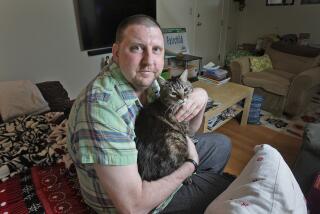Respect for Patient’s Life Must Be Central in Debate Over Death
- Share via
The media have focused in recent years on issues surrounding “physician-assisted suicide,” with emphasis on such subjects as Dr. Jack Kevorkian and a recent U.S. Supreme Court ruling. Lately, such articles have begun to refer to comments from sources on the subject of “passive euthanasia” a new code word for physician-directed death (versus physician-assisted suicide). It is frightening that many physicians seem to be oblivious to the confused logic and to the inappropriate, even illegal, behavior committed under the cover term passive euthanasia.
Specifically, the new vocabulary uses the term passive euthanasia to describe the situation in which the physicians, using their own beliefs and fears, commit a life-shortening action of withdrawing treatment, or of not giving treatment, or of giving treatment they decide is an acceptable way to hasten the patient’s death. The term is put in opposition to “active euthanasia,” a new term for what we have been calling physician-assisted suicide. (Physician commits an action that patient requested to end own life.)
To understand the severity of this issue, note that the American Hospital Assn. reports that 70% of the deaths in hospitals happen after a decision has been made to withhold treatment. How often the patient participates in that decision is not known.
In spite of these numbers, the current national focus has been on whether to allow physician-assisted suicide, virtually ignoring the physician-directed death. The courts and the public have had an opportunity to put controls and limits on euthanasia. Instead we have re-enforced a conspiracy of silence and left the power in the hands of physicians. By not setting out legal guidelines on physician-directed death, we have accomplished the opposite--and they can and do make decisions and take actions causing our deaths without our permission.
A physician has been quoted as seeming to believe in a psychic wonderland where “I don’t have to tell them or get their verbal or written consent. It’s just silently understood, an unspoken agreement.” The same physician states, “You take away hope when you say that nothing can be done.” He doesn’t even tell the patient he wants to relieve suffering because “suffering has a horrible connotation.” For whom? This is true ostrich-like behavior in the belief that by not saying anything, mental anguish doesn’t exist. Who is the physician protecting other than his or her own fears of mortality and lack of skills and emotional strength to deal with dying and death?
The patients we have worked with over the years (myself and co-authors Gail Cason-Reiser and Michael Demoratz) are not afraid of the event of their death, but instead are terrified of the process of dying because they feel they don’t know what is going to happen, haven’t been told, aren’t going to be told, have no power or control, and can’t trust whoever is supposedly in charge. This fear of the unknown is caused by a failure of many in the medical community to be honest, or to offer explained options, or to solicit patient desires, or to respect patient wishes.
*
In a era of multiple, yet independent physicians, it is extremely difficult to find a individual physician who is “in charge” and who has assumed the responsibility of making sure the patient needs are met. Many physicians apparently don’t seem to understand that it is the patient who has the right to make decisions. It is the physician’s responsibility to assist patients by working together with them, providing information so that they can make informed decisions and give consent to treatment or request the withholding of treatment.
We believe patients have a right to what we call a passive suicide, which is doing something by doing nothing, and that this is the way most patients commit “suicide” by rejecting treatment. This is within the rights of the patient, not the physician or under the cloak of passive euthanasia.
Our experience tells us that there would be no need for physician assistance in dying if physicians were honest, forthright and informative with their patients. If patients are told the true nature of their condition, how their death might occur, and in what time frame, they will usually opt for a physical pain-relieving and emotionally supported course of palliative (comfort) care.






